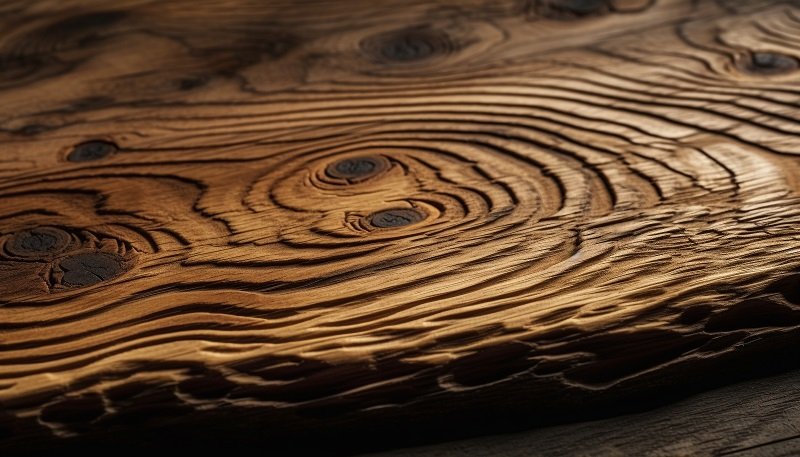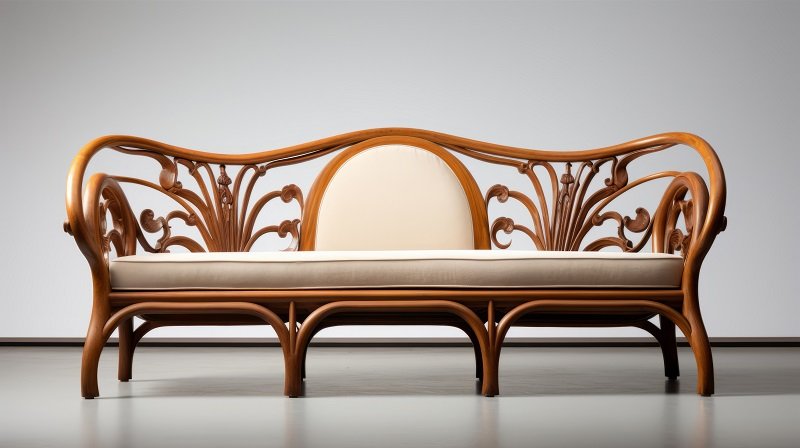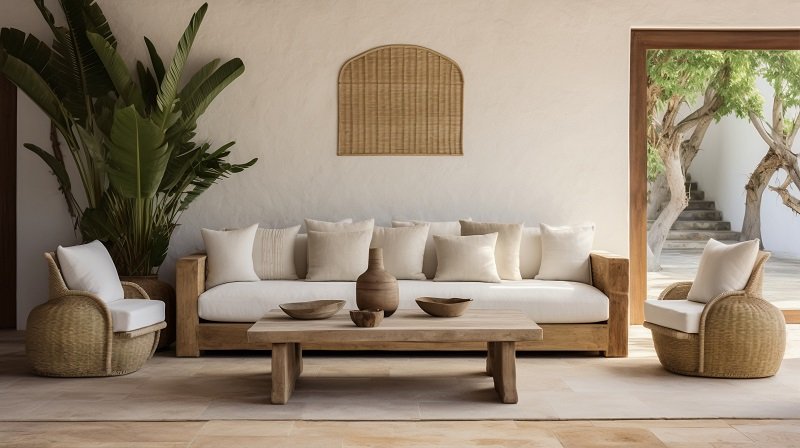Blog
Which Wood is Good for Sofa Set?

Introduction
The sofa set, which is usually the centerpiece of the living room, plays an important part in defining the tone of your home. But what if I told you that the sort of wood used to create a sofa can have a significant impact on its beauty and durability?
Choosing the proper wood for your wooden sofa set is about more than simply looks; it’s about finding the ideal balance between longevity, upkeep, and style. As professionals in the furniture industry, we’ve seen firsthand how the right wood can convert a basic piece of furniture into a treasured family heirloom. Whether you’re moving into a new residence or trying to freshen your space, recognizing the differences between wood kinds will help you make an informed selection that fits your lifestyle and enhances your home.
Understanding Wood Types
Choosing the proper wood for your sofa set is like picking the perfect ingredients for a favorite dish. Just as each component has its flavor and texture, each type of wood has special features that influence the overall feel and usefulness of your wooden sofa set.

Hardwood vs. Softwood
To begin, it is essential to understand the fundamental differences between hardwood and softwood. Hardwoods, such as oak and mahogany, are obtained from deciduous trees that shed their leaves annually. These woods are often denser, which increases longevity and resilience to wear and tear. Softwoods, such as pine and cedar, are produced from coniferous trees that often remain evergreen. Softwoods are less thick than hardwoods, but they are frequently simpler to work with and, when utilized appropriately, maybe just as attractive and practical.
Common Hardwood Types
- Oak: Oak is renowned for its strength and durability, making it a popular choice for high-traffic furniture pieces. Its prominent grain pattern adds a rustic charm that can complement both traditional and contemporary interiors. An oak sofa set can be likened to a trusted old friend—reliable, sturdy, and full of character.
- Maple: Maple wood is valued for its smooth finish and resilience. It’s a versatile choice that works well in various styles, from sleek modern designs to more classic, intricate carvings. Think of maple as the chameleon of woods, adapting effortlessly to any setting while maintaining its elegance.
- Mahogany: Known for its rich, reddish-brown hue and fine grain, mahogany exudes luxury and sophistication. A mahogany sofa set is an investment piece, one that brings a sense of grandeur and timelessness to your home. It’s the wood equivalent of a tailored suit—always in style and impeccably refined.
- Walnut: Walnut wood offers a deep, warm color and a smooth finish that adds an air of understated elegance to any furniture piece. It’s durable and relatively easy to maintain, making it a practical yet stylish choice. Imagine walnut as the little black dress of woods—versatile, chic, and eternally fashionable.
Common Softwood Types
- Pine: Pine is a cost-effective, lightweight option that’s easy to work with. Its pale color and subtle grain make it an excellent canvas for various finishes and stains. Pine furniture, much like a blank canvas, allows you to express your creativity and personalize your space.
- Cedar: Cedar’s natural resistance to decay and insects makes it a smart choice for both indoor and outdoor furniture. Its aromatic properties add a pleasant scent to your home, creating a cozy, inviting atmosphere. Think of cedar as the fragrant herb in your kitchen—functional, pleasing, and with an added touch of charm.
- Fir: Fir wood is known for its stiffness and strength, making it a reliable option for sturdy furniture. Its straight grain and uniform texture offer a clean, minimalist aesthetic. Fir is like the dependable workhorse of woods—unassuming yet incredibly reliable.

Hardwood for Sofa Sets
Now that we know the basis, let’s understand why hardwood is often the preferred material for wooden sofa sets. Hardwood’s natural strength and endurance make it a good choice for furniture that endures everyday usage and the test of time.
Oak
Oak, one of the most popular hardwoods, has been used to make furniture for ages. Its sturdy construction assures that your sofa set will be a reliable friend for endless family gatherings, movie evenings, and pleasant days. Oak wood grain patterns vary from straight lines to complex swirls, giving each item a unique, natural creativity.
Maple
Maple’s adaptability makes it a favorite among furniture makers and homeowners alike. Its ability to take on various finishes means it can match any decor style, from the sleek lines of a contemporary loft to the ornate details of a vintage-inspired living room. Maple’s fine, even grain provides a smooth surface that’s perfect for intricate carvings and detailed craftsmanship.
Mahogany
For those who value the finest things in life, mahogany is the wood of choice. Its deep, rich color and exquisite grain pattern make it a focal point in any environment. A mahogany sofa set is more than simply furniture; it’s a statement item that reflects sophistication and beauty.
Walnut
Walnut wood offers a unique combination of strength and beauty. Its rich, dark tones and smooth finish lend an air of understated elegance to any sofa set. Walnut’s durability ensures that your furniture will remain a cherished part of your home for years to come.

Softwood for Sofa Sets
While hardwoods frequently get the focus, softwoods may be just as appealing when handled correctly. Softwoods such as pine, cedar, and fir have unique benefits that make them practical choices for wooden sofa sets, particularly for those seeking budget-friendly and visually pleasing options.
Pine
Pine is a favorite among those who appreciate the beauty of wood but are mindful of their budget. Its light color and smooth texture make it a versatile choice for various finishes, allowing for endless customization possibilities. Pine’s softness makes it easy to work with, enabling intricate designs and creative expressions.
Cedar
Cedar is known for its natural resistance to decay and insects, making it a practical choice for furniture that’s built to last. Its aromatic properties also add a pleasant scent to your home, enhancing the overall ambiance. Cedar’s warm, reddish tones and straight grain pattern create a visually appealing and durable sofa set.
Fir
Fir wood is celebrated for its stiffness and strength, making it a reliable choice for sturdy furniture. Its straight grain and uniform texture offer a clean, minimalist aesthetic that’s ideal for modern interiors. Fir’s durability ensures that your sofa set can withstand daily wear and tear, maintaining its integrity and appearance over time.
Durability and Maintenance of Wooden Sofa Sets
Hardwood Sofa Set Durability and Maintenance
- Oak: Oak is known for its strength and durability, typically lasting centuries with little damage. Its firm construction prevents scratches and cracks, making it suitable for houses with pets or children. Maintaining oak furniture is rather simple. Regular cleaning and polishing may keep the wood appearing fresh and new. To avoid discoloration and warping, keep oak furniture away from sunlight and excessive humidity.
- Maple: Maple’s toughness stems from its thick, hard surface, which resists wear and tear well. It’s an excellent solution for high-use furniture items, such as sofas in busy households. To keep maple furniture looking good, clean it regularly using a soft cloth and mild soap. Polishing using a high-quality furniture wax may help maintain its smooth finish and prevent scratches.
- Mahogany: Mahogany’s rich color and fine texture add to its elegance while also contributing to its strength and longevity. It is less likely to swell, shrink, or distort than other woods. To preserve mahogany furniture, avoid using strong chemicals. Instead, dust with a soft cloth and apply a specialized mahogany polish to bring out the natural shine. Keep mahogany furniture out of direct sunlight to avoid fading.
- Walnut: Walnut is noted for its strength and ability to resist heavy use. Its rich color and smooth finish make it a long-lasting alternative that requires little care. Regular cleaning and use of walnut oil may rejuvenate the wood and protect it from drying out. To preserve the natural luster of walnut furniture, keep it out of an extremely dry environment.
Softwood Sofa Set Durability and Maintenance
- Pine: Pine, while softer than hardwoods, may nevertheless be quite durable with careful care. Its lighter color makes scratches more visible, although they can easily be polished away. To keep your pine furniture looking good, clean it regularly with a soft cloth and a light wood cleaner. Applying a protective finish might also assist in avoiding damage.
- Cedar: Cedar’s natural resistance to insects and rot makes it a long-lasting choice for furniture. Its aromatic characteristics might fade with time, but carefully polishing the surface can revive the perfume. Regular cleaning with a soft cloth and mild soap keeps cedar furniture looking good. To avoid mildew, keep cedar furniture out of extremely wet environments.
- Fir: Fir’s strength and uniform texture make it a long-lasting material for furniture. Its natural light color may be maintained with treatments that improve both look and longevity. To keep fir furniture in good condition, clean it regularly using a soft cloth and mild cleanser. Applying a protective finish might assist in preserving its beauty and prevent damage.
Pros and Cons of Each Wooden Sofa Set
1- Oak
- Pros: Highly durable, distinct grain patterns, timeless appeal.
- Cons: Can be heavy and difficult to move, susceptible to discoloration in sunlight.
2- Maple
- Pros: Versatile, smooth finish, resistant to wear.
- Cons: Can be prone to cracking if not properly maintained.
3- Mahogany
- Pros: Luxurious appearance, resistant to warping, rich color.
- Cons: Expensive, requires regular polishing to maintain luster.
4- Walnut
- Pros: Deep color, smooth finish, robust.
- Cons: Can be costly, and may darken over time if exposed to direct sunlight.
5- Pine
- Pros: Affordable, easy to work with, versatile.
- Cons: Prone to scratches and dents, can show wear quickly.
6- Cedar
- Pros: Natural resistance to decay and insects, pleasant aroma.
- Cons: Can be soft and prone to scratches, scent may fade over time.
7- Fir
- Pros: Strong and sturdy, uniform texture, minimalist appeal.
- Cons: Can be susceptible to moisture damage if not properly finished.
Conclusion
Choosing the perfect wood for your sofa set requires balancing durability, upkeep, and aesthetic appeal. Hardwoods such as oak, maple, mahogany, and walnut are durable, long-lasting solutions that add classic elegance and solidity to your home. Softwoods such as pine, cedar, and fir are affordable, adaptable, and naturally resistant alternatives.
Understanding the unique features of each kind of wood allows you to make an informed selection that satisfies your functional requirements while also improving the aesthetics of your living room. Whether you choose oak’s long-lasting strength, maple’s adaptable elegance, mahogany’s luxurious appeal, or fir’s minimalist beauty, each type of wood has something unique to offer your home.
FAQs
1- What is the best wood for a sofa set?
The best wood for a sofa set depends on your needs. Hardwoods like oak, mahogany, and walnut are excellent for durability and elegance, while softwoods like pine and cedar offer affordability and versatility.
2- How do I maintain a wooden sofa set?
Regular dusting, polishing, and avoiding direct sunlight can help maintain a wooden sofa set. Use appropriate cleaning products for the type of wood, and consider periodic professional maintenance for longevity.
3- Are hardwoods better than softwoods for sofa sets?
Hardwoods are generally more durable and resistant to damage, making them ideal for long-term use. Softwoods are lighter and more cost-effective, making them suitable for those on a budget or who prefer frequent style changes.
4- Can I use a wooden sofa set outdoors?
Certain woods, like teak and cedar, are naturally resistant to the elements and can be used outdoors. However, it’s essential to treat the wood with appropriate finishes and maintain it regularly to withstand weather conditions.
5- What are the environmental impacts of choosing different woods for furniture?
Hardwoods often come from slower-growing trees, which can impact deforestation. Look for sustainably sourced or certified woods to minimize environmental impact. Softwoods grow faster and can be a more sustainable option if sourced responsibly.
6- How can I tell if a wooden sofa set is high quality?
High-quality wooden sofa sets have solid construction, with joints that are glued and screwed, not stapled. The wood should feel sturdy, and the finish should be smooth and even. Ask about the type of wood and its source to ensure quality.
7- Is it worth investing in a hardwood sofa set?
Yes, investing in a hardwood sofa set can be worthwhile due to its durability, longevity, and timeless appeal. While the initial cost may be higher, it often pays off in the long run with less frequent replacements and enduring style.
8- What finishes are best for protecting wooden furniture?
Finishes like polyurethane, varnish, and oil-based treatments offer excellent protection. These finishes protect the wood from moisture, scratches, and stains while enhancing its natural beauty.
9- Can I mix different wood types in my living room?
Absolutely! Mixing different wood types can add depth and interest to your living room. Ensure the tones complement each other, and use a consistent finish to create a cohesive look.
10- How does the type of wood affect the weight of a sofa set?
Hardwoods are generally denser and heavier than softwoods. This can affect the ease of moving the furniture but also contributes to the stability and durability of the piece. Softwoods are lighter, making them easier to move and rearrange.




